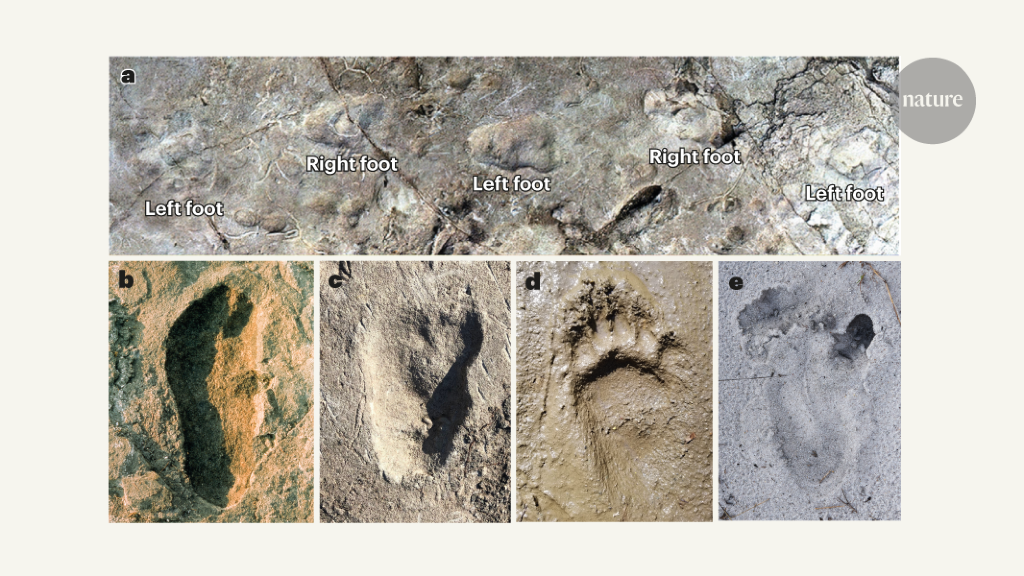NEWS AND VIEWS 01 December 2021
The human version of walking on two legs, known as striding bipedalism, is unique among mammals. It requires the ability to balance a tower of loosely connected body parts over a single foot, as the other foot swings forwards to complete the stride. Conventional wisdom holds that this ungainly form of locomotion had a single evolutionary origin in an ancestral hominin, followed by about six million years during which further anatomical adjustments accumulated — a linear model of evolution in which early hominin bipedalism became progressively more similar to our own over time. However, fossils discovered during the past decade show that multiple versions of bipedalism existed simultaneously during one or more periods of hominin evolution. Writing in Nature, McNutt et al.1 suggest that evidence of locomotor diversity in hominins has been overlooked for many decades. doi: https://doi.org/10.1038/d41586-021-03469-4 1.McNutt, E. J. et al. Nature https://doi.org/10.1038/s41586-021-04187-7 (2021).Article Google Scholar 2.Leakey, M. D. & Harris, J. M. Laetoli. A Pliocene Site in Northern Tanzania (Clarendon, 1987). Google Scholar 3.Tuttle, R. H., Webb, D. M. & Tuttle, N. I. in Origine(s) de la Bipédie chez les Hominidés (eds Coppens, Y. & Senut, B.) 187–198 (CNRS, 1991). Google Scholar 4.Tuttle, R. H., Webb, D. M., Tuttle, N. I. & Baksh, M. in Topics in Primatology Vol. 3 (eds Matano, S., Tuttle, R. H., Ishida, H. & Goodman, M.) 221–242 (Univ. Tokyo Press, 1992). Google Scholar 5.Wood, B. & Boyle, E. K. Am. J. Phys. Anthropol. 159, S37–S78 (2016).PubMed Article Google Scholar 6.Kimbel, W. H. in Handbook of Paleoanthropology (eds Henke, W. & Tattersall, I.) 2071–2105 (Springer, 2015). Google Scholar 7.Haile-Selassie, Y. et al. Nature 483, 565–569 (2012).PubMed Article Google Scholar 8.Lovejoy, C. O., Latimer, B., Suwa, G., Asfaw, B. & White, T. D. Science 326, 72 (2009).Article Google Scholar Download references The author declares no competing interests. Evolution Palaeontology Anthropology
https://www.nature.com/articles/d41586-021-03469-4
